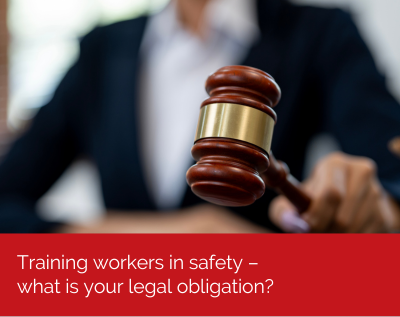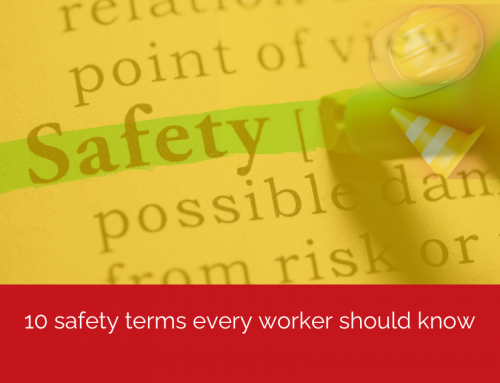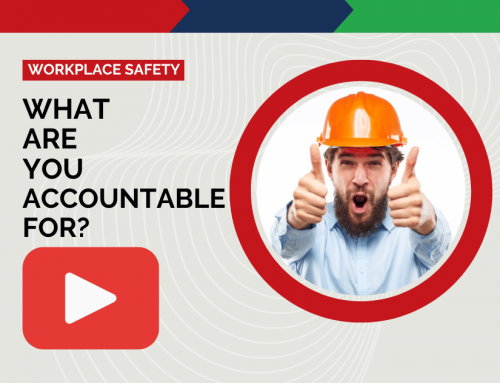
Find out how to safeguard your employees and your organisation by understanding and meeting your key legal duties regarding safety training.
Under Australian WHS/OHS legislation, employers are mandated to ensure a safe working environment for all workers. As well as providing a safe workplace where they assess and control risks, employers are also obligated to provide employees with adequate training, instruction, information, and supervision to perform their work safely and without risks to health.
Investing in WHS training for your workforce does more than just meet legal obligations; it introduces an additional layer of safety vigilance at work. Workers with WHS skills become invaluable assets, enhancing workplace safety and using their knowledge to reduce the risk of incidents. These skills boost their effectiveness and versatility.
Additionally, businesses and individuals may face criminal charges under Industrial Manslaughter laws if their negligence (which can include a lack of training in workplace safety) leads to a fatality. If found guilty, penalties may include hefty fines for businesses and jail terms for individuals (varying by state*).
What are an employer’s general legal obligations regarding safety training for their employees and contractors?
Identify training needs
Employers must identify the WHS training needs specific to their workplace and the needs of their workers by understanding the nature of the work, the risks associated with it, and the specific requirements of the WHS legislation that apply. This process involves analysing the current skills and knowledge of employees regarding health and safety practices to highlight areas where training is needed. This consultation should cover the types of training required, how it will be delivered, and who will receive it, utilising methods such as surveys, interviews, or discussions with health and safety representatives to ensure comprehensive coverage of training needs.
Induction training
All new employees should undergo induction training that covers WHS responsibilities, the identification of hazards, and the procedures for reporting and responding to potential risks.
Provide information
All workers must be provided with easy access to information about the risks in their workplace and the measures in place to manage these risks. Employers must develop and implement training programs tailored to the specific needs identified and must cover the following:
Certain high-risk roles may require competency-based training. This might include your workers who operate heavy machinery, work at heights, or handle hazardous substances. Competency-based training often results in a recognised qualification, licence or ticket. Employers need to view, verify and record that each employee holds the relevant current qualification, licence or ticket, and through a verification of competency process, confirm their employee’s ability to undertake the tasks safely.
Supervision
Employers must provide appropriate supervision to ensure workers are applying their training and working safely. The level of supervision should be adjusted depending on the worker’s experience, the complexity of the task, and the associated risks. Supervisors should monitor work practices, guide workers as needed, and intervene promptly if unsafe behaviours or conditions are identified.
Keeping records
Employers must keep records of all WHS training conducted for their workers, including the content of the training, the trainer’s qualifications, and attendance records.
Ongoing education and refresher training
WHS training is not a one-time requirement. Regular refresher training should be provided to address changes in legislation, work practices, or the introduction of new equipment or technology. To maximise effectiveness and ensure training sticks, training should include ongoing embedding activities to keep the key messages and expected behaviours going.
Consult with workers
Employers are required to consult with all their workers on the ongoing effectiveness of WHS training programs.
What happens if you don’t?
Failing to meet your obligations around safety training and supervision can have serious consequences. Employers and individuals may face:
- Legal penalties, including fines and imprisonment under WHS legislation and Industrial Manslaughter laws.
- Reputational damage, which can impact the organisation’s ability to attract and retain staff.
- Increased incidents and injuries, leading to higher workers’ compensation premiums and operational disruptions.
- Personal liability for officers and leaders if they have not exercised due diligence in ensuring a safe workplace.
What a leader needs to do
To meet your legal duties and build a culture of safety leaders need to:
- Review your current WHS training and supervision arrangements.
- Identify gaps and risks in how training and supervision are delivered.
- Provide regular and tailored WHS training to all workers and contractors.
- Ensure supervisors are competent and actively monitoring safety in the workplace.
- Keep accurate records of all training and supervision activities.
- Consult with workers on training effectiveness and improvements.
Why go beyond the basics of safety training?
The outcomes of WHS training can extend beyond keeping workers safe and legal compliance. It helps employers retain talent, maximise productivity and can reduce business costs, as the frequency and severity of workplace incidents can influence an employer’s cost of workers’ compensation insurance premiums.
Training everyone in your workforce in WHS helps create teams that are conscientious, skilled, and ready to contribute to a safer working environment. An investment in safety training is the foundation for a productive, secure, and successful business operation.





